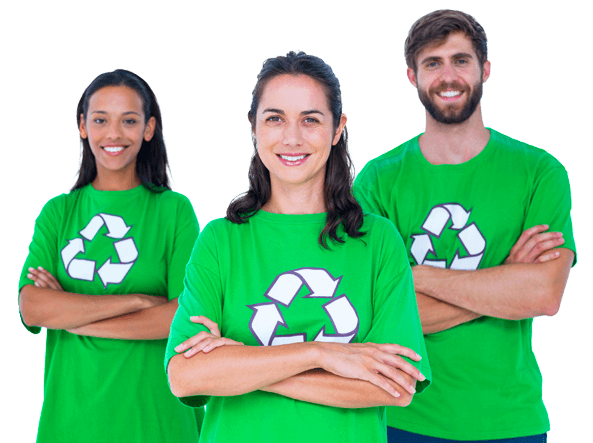Plastics to Evade for a Healthier Home and Planet
Posted on 22/09/2025
Plastics to Evade for a Healthier Home and Planet
In the modern world, plastics have become nearly inescapable, forming a part of countless items in our households, workplaces, and communities. However, as awareness about the health risks and environmental impacts related to plastic use grows, more individuals are seeking ways to create a healthier home environment and foster a cleaner planet. This comprehensive guide will explore the types of plastics to avoid, why it's crucial for both personal health and ecological well-being, and offer actionable tips for making safer, more sustainable choices.

Understanding the Problem: Why Certain Plastics Are Hazardous
Before diving into the specific plastics to evade for a healthier home and planet, it's essential to recognize why some plastics are classified as dangerous. Many types of plastic are composed of chemicals, additives, and toxins that not only present risks to your health but also wreak havoc on ecosystems once they're discarded.
- Chemical Leaching: Certain plastics can leach harmful chemicals into food, drinks, and even the air, especially when heated or scratched.
- Environmental Persistence: Most plastics aren't biodegradable. They can take hundreds or thousands of years to break down, filling landfills and polluting oceans.
- Bio-Accumulation: Plastics often absorb toxins from their surroundings, making their way into the food chain and ultimately reaching humans.
These dangers underscore the importance of minimizing plastic exposure--both to safeguard your well-being and to protect the earth.
Identifying the Most Harmful Plastics in Your Home
Not all plastics pose equal risks. The type of resin used in the manufacturing process determines how hazardous the product may be. You can usually identify plastics by the Resin Identification Code--a number (1-7) surrounded by a triangle, often found on the bottom of containers.
#3 PVC (Polyvinyl Chloride)
- Main Uses: Plumbing pipes, vinyl flooring, shower curtains, cling wrap, and some children's toys.
- Hazards: PVC contains phthalates and can off-gas toxic chemicals known as volatile organic compounds (VOCs). When heated, PVC releases dioxins--a group of persistent, highly toxic pollutants.
- Health Risks: Hormonal disruption, respiratory issues, developmental problems in children, and increased cancer risk.
Recommendation: Avoid products made from PVC, especially in food packaging, children's toys, and home furnishings. Opt for alternatives like cotton shower curtains, glass food containers, and safer piping options.
#6 PS (Polystyrene)
- Main Uses: Disposable coffee cups, takeout containers, egg cartons, and packing peanuts.
- Hazards: Releases styrene, a probable human carcinogen, especially when exposed to heat or greasy foods.
- Environmental Impact: Polystyrene is lightweight but bulky, making it a prevalent form of litter that is difficult to recycle and a choking hazard for wildlife.
Recommendation: Steer clear of polystyrene products. Choose reusable containers, bring your own cup, and say no to foam takeout boxes.
#7 (Other, including Polycarbonate and BPA-Containing Plastics)
- Main Uses: Large water bottles, baby bottles, food storage containers, electronics, and the lining of canned foods.
- Hazards: May contain Bisphenol-A (BPA), a chemical linked to hormonal imbalances, fertility problems, and increased cancer risk.
Recommendation: Look for products labeled "BPA-free," but be cautious, as alternatives like BPS and BPF may have similar health effects. Glass or stainless steel is preferable.
#1 PET or PETE (Polyethylene Terephthalate)
- Main Uses: Water and soda bottles, salad dressing containers, and food packaging.
- Hazards: Intended for single use only. Repeated use or exposure to heat can lead to leaching of chemicals like antimony.
Recommendation: Never reuse single-use PET bottles. Opt for reusable bottles made of safer materials.
Why Evading Harmful Plastics Matters
For Your Health
- Lowered Chemical Exposure: Reducing the use of harmful plastics decreases your exposure to toxins such as BPA, phthalates, and dioxins that can disrupt hormones and pose cancer risks.
- Safer Food Storage: Avoiding plastic food containers ensures that your meals aren't contaminated with potentially harmful substances.
- Child Safety: Babies and children are more vulnerable to the impacts of plastics because of their developing bodies and higher rates of contact with toys, bottles, and other products.
For Our Planet
- Plastic Pollution: Plastic waste accumulates in landfills and oceans, breaking down into microplastics that harm marine life and enter the food chain.
- Climate Change: Plastic production relies heavily on fossil fuels, emitting greenhouse gases throughout its lifespan.
- Ecosystem Damage: Animals mistakenly ingest plastic debris, leading to injury or death, and toxic chemicals from plastics poison soil and water.
Smart Alternatives: Healthier Choices for Home and Environment
The good news is, it is possible to significantly reduce your plastic footprint by making informed choices and opting for eco-friendly materials. Here are some sustainable alternatives:
- Glass: Non-toxic, durable, and completely recyclable, glass is ideal for food storage, drinkingware, and cooking.
- Stainless Steel: Resistant to corrosion and safe for contact with food and beverages. It's excellent for water bottles and lunch containers.
- Bamboo and Wood: Naturally renewable, free from harmful chemicals, and a stylish alternative for cutlery, tabletop, or kitchenware.
- Silicone: A safer, flexible alternative to plastic, especially for kitchen tools and reusable bags. Ensure you choose food-grade silicone.
- Natural Fibers: Organic cotton, linen, and hemp can replace plastic in products like reusable bags, shower curtains, and cleaning cloths.
Making a habit of selecting these materials helps you contribute to a healthier household while advancing the well-being of our planet.
How to Minimize Plastic in Everyday Life
Wondering where to start? These steps can get you on the path to a plastic-free lifestyle and a greener home environment. Incorporate as many as possible for maximum impact!
- Identify and Eliminate: Conduct a plastic audit in your home to pinpoint the most common and hazardous plastics. Replace them with safer alternatives gradually.
- Choose Fresh Over Packaged: Buy fresh produce instead of pre-packaged options, and bring your own reusable bags to the store.
- Avoid Plastic Wrap: Use beeswax wraps or glass containers for food storage instead of cling film.
- Switch Toilet and Kitchen Products: Opt for bamboo or wooden utensils, glass jars, and cloth napkins.
- Sustainable Cleaning and Personal Care: Select bar soaps, refillable cleaning products, and compostable toothbrushes.
- Be a Mindful Shopper: Support companies committed to sustainable, non-plastic packaging.
- Reuse and Recycle Responsibly: Learn your local recycling rules and promote recycling, but focus on reducing first as not all plastics are recycled effectively.
Do's and Don'ts: Quick Tips to Evade Plastics
- Do check the resin codes on plastic products before purchase.
- Do prioritize reusable, durable items over disposables.
- Do store food in glass, stainless steel, or high-quality silicone containers.
- Do educate children and family members about the dangers of unsafe plastics.
- Don't heat food in plastic containers (even those labeled microwave-safe).
- Don't refill single-use water and soda bottles.
- Don't use plastic toys, especially for infants, unless certain of their safety.

Frequently Asked Questions About Avoiding Plastics
1. Can plastics really affect my family's health?
Yes! Continuous exposure to harmful plastics can disrupt hormones, increase cancer risk, and pose developmental dangers to young children. Taking steps to remove these plastics from your home is a proactive way to safeguard your family.
2. Are "bio-plastics" and "compostable plastics" safe?
While many are marketed as eco-friendly, some bioplastics still end up in landfills where they don't break down as expected. Moreover, not all are free from harmful additives. Read labels carefully and choose certified compostable products from reputable sources.
3. How can I identify safer plastics?
Generally, plastics labeled with #2 (HDPE), #4 (LDPE), and #5 (PP) are considered safer for limited use in food storage. Even these should not be exposed to heat or harsh wear.
4. What about plastic recycling?
Most plastics are technically recyclable, but only a small percentage are actually recycled due to material contamination and lack of processing facilities. Reducing plastic usage is more effective than relying on recycling alone.
The Path Forward: Building a Healthier Home and Planet
Addressing the issue of plastics to evade for a healthier home and planet is not a fleeting trend--it's a necessary shift in lifestyle for the well-being of both people and the environment. While completely eliminating plastic may not be practical for everyone, every conscious choice counts.
- Start with Small Steps: Replace your water bottle, swap out your food containers, or simply say no to a plastic straw.
- Educate Others: Share knowledge and inspire friends, family, and coworkers to join you in making smarter choices.
- Support Policy Change: Advocate for regulations that reduce single-use plastics and promote environmentally friendly alternatives.
- Lead by Example: Choose to consume less, buy better, and foster a home that reflects your commitment to health and sustainability.
Conclusion: Making a Difference, One Choice at a Time
In conclusion, choosing to minimize or completely eliminate hazardous plastics in your home is one of the most impactful actions you can take for your health and for the earth. By evading the most harmful plastics, opting for safer materials, and practicing mindful consumption, your living space will become a healthier sanctuary. At the same time, you'll play a vital role in the global movement towards a cleaner, more sustainable planet.
Remember: Every step towards reducing plastic use is a step toward a healthier home and environment.
Start today, and make a lasting difference--it's the only home we have.

 020 3875 4096
020 3875 4096 020 3875 4096
020 3875 4096




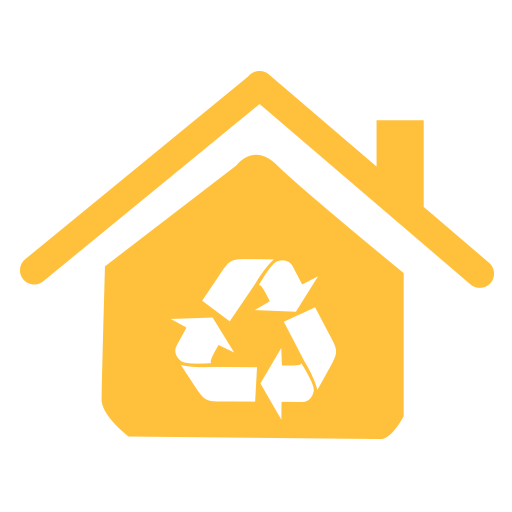 House clearance
House clearance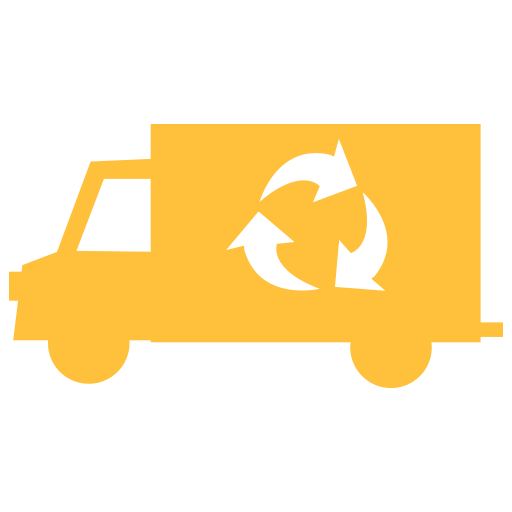 Rubbish collection
Rubbish collection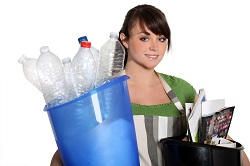 London Rubbish Clearance is one of the most popular companies for
London Rubbish Clearance is one of the most popular companies for 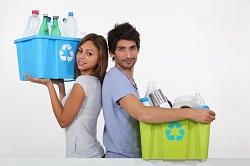 Our company in London is all you need for professional rubbish collection! London Rubbish Clearance has lots of experience when it...
Our company in London is all you need for professional rubbish collection! London Rubbish Clearance has lots of experience when it...